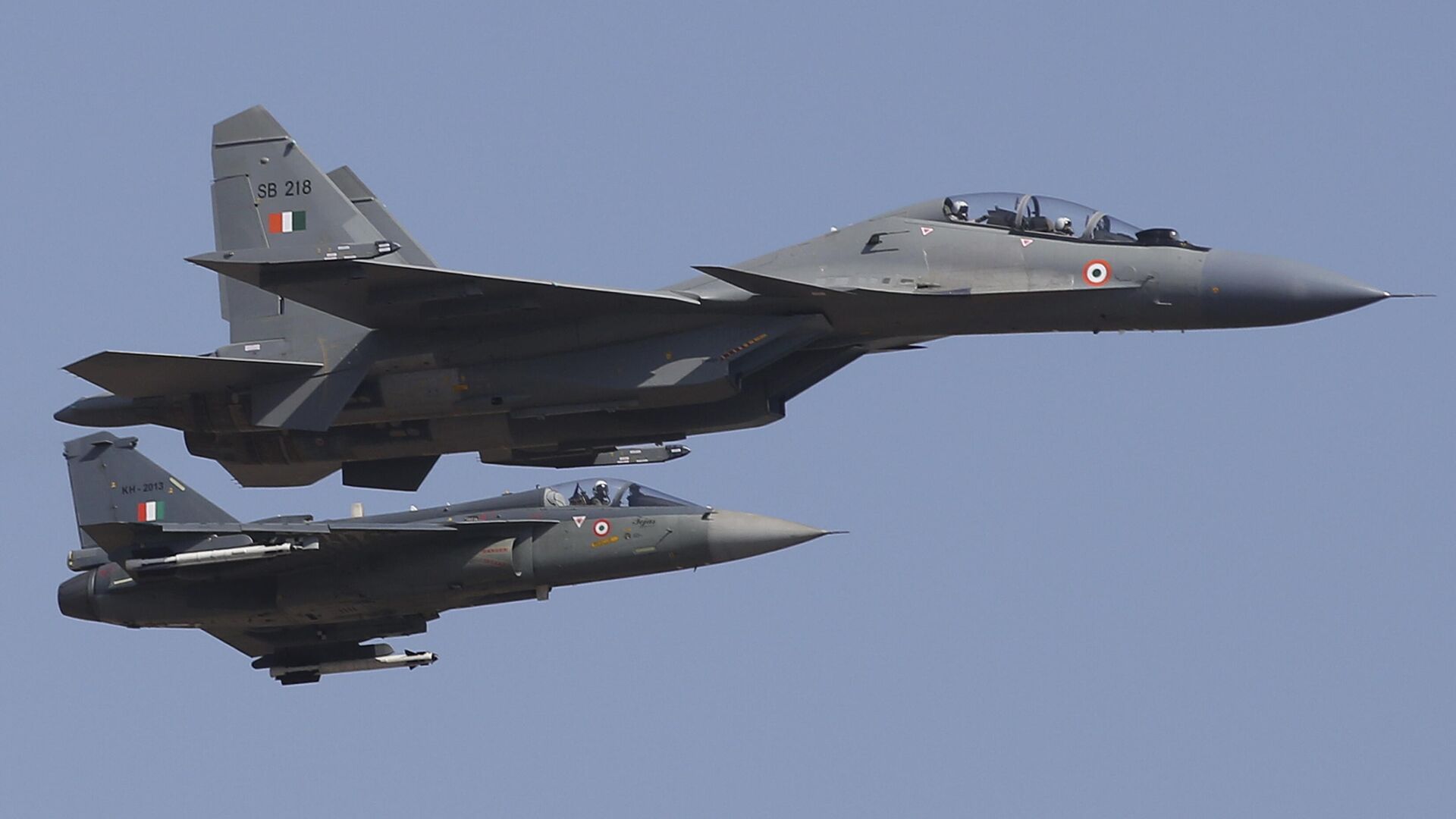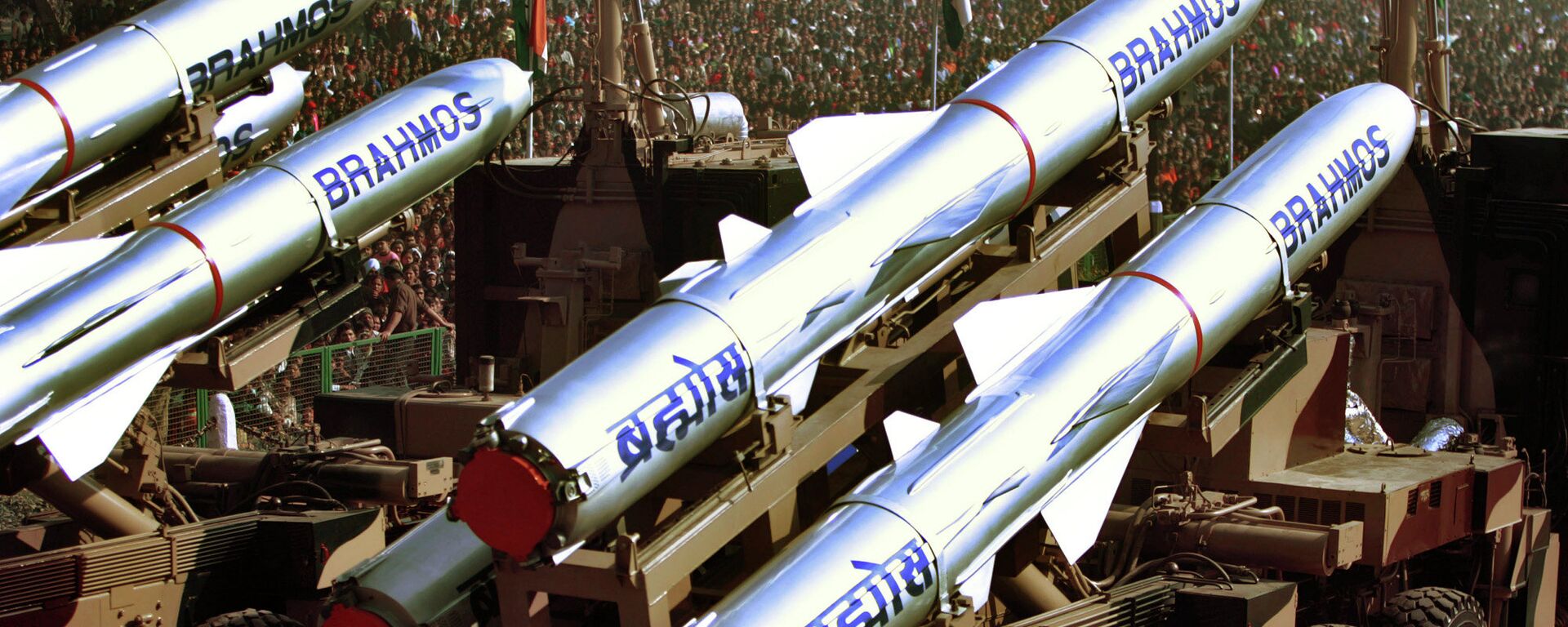https://sputniknews.in/20250715/military-self-reliance-russia-wants-to-see-india-stand-on-its-feet---army-vet-9452373.html
Military Self-Reliance: 'Russia Wants to See India Stand on Its Feet' - Army Vet
Military Self-Reliance: 'Russia Wants to See India Stand on Its Feet' - Army Vet
Sputnik India
India is vigorously following an indigenous defence programme under the 'Make in India' initiative, with the Ministry of Defence (MoD) giving priority to... 15.07.2025, Sputnik India
2025-07-15T20:37+0530
2025-07-15T20:37+0530
2025-07-15T20:37+0530
sputnik opinion
india
russia
us
indo-russian rifles private limited (irrpl)
ministry of defence (mod)
sukhoi su-30mki
brahmos supersonic cruise missile
missiles
operation sindoor
https://cdn1.img.sputniknews.in/img/07e8/02/17/6650144_0:75:3304:1934_1920x0_80_0_0_f3c1dd715efadb20c16841e231dd92a7.jpg
Indigenous content in India's Su-30MKIs is set to rise as Hindustan Aeronautics Limited (HAL) has tapped a domestic firm to supply it with superalloys that will be used in Russian-origin AL31 engines powering the country's frontline multirole fighter jet.HAL has signed an INR 6000 million ($70 million) contract with Mishra Dhatu Nigam Limited (MIDHANI) to commence deliveries of superalloys, according to the military publication Alpha Defense.Notably, India has initiated a modernisation programme for its fleet of over 260 Su-30MKI combat planes, which is the mainstay of the nation's air force, and the latest development is being seen as another attempt to reduce its dependence on overseas suppliers, especially for critical components that are vital for the operations of a high-value asset like a warplane.One must not lose out on the importance of superalloys for a military aircraft engine.Not only do superalloys provide outstanding strength to a fighter jet's engine, but they are also vital for strengthening its durability and heat tolerance.For instance, as part of the upgrade programme of the Su-30MKIs, these aircraft will see their original radars being replaced with the Defence Research & Development Organisation (DRDO) developed Virupaksha AESA radar. In addition to that, the Su-30MKIs will be fitted with advanced avionics, a modern electronic warfare suite, and the country's homegrown long-range missiles.The over $7 billion modernisation programme is also set to extend the lifespan of the Su-30MKIs by over two decades.Russia has always been very supportive of India's endeavours, such as Atmanirbhar Bharat (self-reliant India) and Make in India, which aim to make the country self-sufficient in the defence domain, underlined retired Lieutenant Colonel JS Sodhi, a veteran of the Indian Army and the author of China's War Clouds: The Great Chinese Checkmate in an interview with Sputnik India.Furthermore, Russia has been forthcoming in transferring any technology whenever India has so required. For example, no Western nation has ever shared the source code of a warplane with a country that has imported such a platform. However, in case India does agree to acquire the Su-57 stealth fighter, Russia has promised to provide its source code. This kind of cooperation is unparalleled anywhere in the world, he added.Russian assistance has proved vital in India's progression as a military power, he said. India's success in Operation Sindoor, its counter-terror offensive against Pakistan earlier this year, wouldn't have been possible without Russian technology. BrahMos, an Indo-Russian joint venture, destroyed Pakistani military installations like a pack of cards, once again confirming its status as the best in its class missile, the defence commentator noted.Developing precision munitions, including missiles and fighter aircraft, is in a class of its own, but one must remember that India struggled big time to develop its small arms. Indian troops did not have the most basic requirements to carry out operations, as they lacked a reliable and modern rifle as part of their kit bag, stated Rahul Yelwe, senior research fellow at the Department of Security Studies, School of National Security Studies, Central University of Gujarat.Since IRRPL became operational in 2019, it has already supplied 55,000 rifles to the Indian Army as part of a larger deal for 600,000 rifles that have to be provided to the nation's military within a decade, he concluded.
https://sputniknews.in/20250714/battlefield-to-bull-market-how-brahmos-soars-post-op-sindoor-9444643.html
india
russia
us
delhi
new delhi
moscow
Sputnik India
feedback.hindi@sputniknews.com
+74956456601
MIA „Rossiya Segodnya“
2025
Pawan Atri
https://cdn1.img.sputniknews.in/img/07e6/0c/13/139630_147:0:831:684_100x100_80_0_0_8fa2b25903e7787fe6a2698552c167df.png
Pawan Atri
https://cdn1.img.sputniknews.in/img/07e6/0c/13/139630_147:0:831:684_100x100_80_0_0_8fa2b25903e7787fe6a2698552c167df.png
News
en_IN
Sputnik India
feedback.hindi@sputniknews.com
+74956456601
MIA „Rossiya Segodnya“
Sputnik India
feedback.hindi@sputniknews.com
+74956456601
MIA „Rossiya Segodnya“
Pawan Atri
https://cdn1.img.sputniknews.in/img/07e6/0c/13/139630_147:0:831:684_100x100_80_0_0_8fa2b25903e7787fe6a2698552c167df.png
india, russia, us, indo-russian rifles private limited (irrpl), ministry of defence (mod), sukhoi su-30mki, brahmos supersonic cruise missile, missiles, operation sindoor, counter-terrorism, delhi, new delhi, moscow, hindustan aeronautics limited (hal), drdo, make in india, self-reliant india
india, russia, us, indo-russian rifles private limited (irrpl), ministry of defence (mod), sukhoi su-30mki, brahmos supersonic cruise missile, missiles, operation sindoor, counter-terrorism, delhi, new delhi, moscow, hindustan aeronautics limited (hal), drdo, make in india, self-reliant india
Military Self-Reliance: 'Russia Wants to See India Stand on Its Feet' - Army Vet
India is vigorously following an indigenous defence programme under the 'Make in India' initiative, with the Ministry of Defence (MoD) giving priority to design and develop military equipment at home.
Indigenous content in India's Su-30MKIs is set to rise as Hindustan Aeronautics Limited (HAL) has tapped a domestic firm to supply it with superalloys that will be used in Russian-origin AL31 engines powering the country's frontline multirole fighter jet.
HAL has signed an INR 6000 million ($70 million) contract with Mishra Dhatu Nigam Limited (MIDHANI) to commence deliveries of superalloys, according to the military publication Alpha Defense.
Notably, India has initiated a modernisation programme for its fleet of over 260 Su-30MKI combat planes, which is the mainstay of the nation's air force, and the latest development is being seen as another attempt to reduce its
dependence on overseas suppliers, especially for critical components that are vital for the operations of a high-value asset like a warplane.
One must not lose out on the importance of superalloys for a military aircraft engine.
Not only do superalloys provide outstanding strength to a fighter jet's engine, but they are also vital for strengthening its durability and heat tolerance.
Interestingly, unlike the US, which demands exclusive purchases of its weapons without integrating local components, Russia has been more than willing to allow India to equip its military platforms, acquired from Russia, with domestically produced equipment.
For instance, as part of the upgrade programme of the Su-30MKIs, these aircraft will see their original radars being replaced with the Defence Research & Development Organisation (DRDO) developed Virupaksha AESA radar. In addition to that, the Su-30MKIs will be fitted with advanced avionics, a modern electronic warfare suite, and the country's homegrown long-range missiles.
The over $7 billion modernisation programme is also
set to extend the lifespan of the Su-30MKIs by over two decades.
Russia has always been very supportive of India's endeavours, such as Atmanirbhar Bharat (self-reliant India) and Make in India, which aim to make the country self-sufficient in the defence domain, underlined retired Lieutenant Colonel JS Sodhi, a veteran of the Indian Army and the author of China's War Clouds: The Great Chinese Checkmate in an interview with Sputnik India.
Furthermore, Russia has been forthcoming in transferring any technology whenever India has so required. For example, no Western nation has ever shared the source code of a warplane with a country that has imported such a platform. However, in case India does agree to acquire the Su-57 stealth fighter, Russia has promised to provide its source code. This kind of cooperation is unparalleled anywhere in the world, he added.
"This only shows that Russia is not only interested in supplying arms and ammunition to India but wants to see it stand on its feet, which can only happen when it becomes self-reliant in the defence sector, and for that to happen, it is happy to share whatever technology is needed to make indigenous stealth aircraft, hypersonic missiles, long-range armed drones or anything else," Sodhi stressed.
Russian assistance has proved vital in India's progression as a military power, he said. India's success in Operation Sindoor, its counter-terror offensive against Pakistan earlier this year, wouldn't have been possible without Russian technology.
BrahMos, an Indo-Russian joint venture, destroyed Pakistani military installations like a pack of cards, once
again confirming its status as the best in its class missile, the defence commentator noted.
Developing precision munitions, including missiles and fighter aircraft, is in a class of its own, but one must remember that India struggled big time to develop its small arms. Indian troops did not have the most basic requirements to carry out operations, as they lacked a reliable and modern rifle as part of their kit bag, stated Rahul Yelwe, senior research fellow at the Department of Security Studies, School of National Security Studies, Central University of Gujarat.
"This problem was again resolved by Russia after the two long-time strategic partners joined hands to form the Indo-Russian Rifles Private Limited (IRRPL), leading to the setting up of an assault rifle-manufacturing facility in the Amethi district of Uttar Pradesh," he said in an interview with Sputnik India.
Since IRRPL became operational in 2019, it has already supplied 55,000 rifles to the Indian Army as part of a larger deal for 600,000 rifles that have to be provided to the nation's
military within a decade, he concluded.



